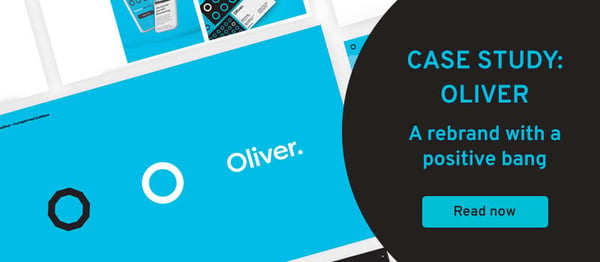A B2B branding strategy is the linchpin of your marketing efforts. For some B2B companies, the whole brand consists of a logo, the company name, and colors. If you do not have a brand strategy, your brand will grow without direction.
Once you get your brand strategy right, you give your marketing direction. You also give your customers something to believe in. Often, this results in higher perceived value and a solid ROI.
Let’s dive into how to craft a winning B2B brand strategy. We’ll cover:
- A brief overview of B2B branding,
- The importance of a B2B brand awareness strategy,
- A B2B brand strategy you can steal for yourself,
- B2B brand strategy examples, and
- Challenges and solutions for brand strategy B2B.
Understanding B2B branding
B2B branding refers to the process of creating, executing, and managing a brand identity for a company or organization that primarily sells its products or services to other businesses.
B2C branding is, in general, geared toward a consumer-type audience. With B2B, you’re trying to reach a specialized, professional audience. This audience may include procurement managers, decision-makers, and professionals. They make purchasing decisions on behalf of their companies.
B2B brand communications often focuses on topics like:
- Trust,
- Reliability,
- Expertise, and
- Building long-term business relationships.
B2C, on the other hand, typically relies on:
- Emotional appeals,
- Lifestyle, and
- Personal preferences to connect with consumers.
B2B brands typically rely on content and messaging focused on product features, benefits, case studies, and industry expertise. While this standard isn’t incorrect, brands should remember their branding isn't speaking to a business. At the other end of that transaction is another human being.
B2B brands can take a page out of B2C’s book. Try to emphasize storytelling, the user experience, and an emotional connection.

Why you need a brand strategy in the B2B sector
In our digital age, branding is crucial within any sector. You need to allocate budget and effort to a thought-out brand strategy. Here are five reasons why.
- Establishing trust. In B2B relationships, trust is paramount. A strong brand conveys reliability, integrity, and a commitment to quality. This helps build trust among business customers.
Enhanced credibility is one benefit of establishing a trustworthy reputation. A reputable brand attracts more inquiries, partnerships, and collaboration opportunities.
- Competitive advantage. Effective branding sets your business apart from competitors in the same industry. It can be a key differentiator, making it easier for potential customers to choose your products or services.
Having a well-defined competitive advantage can help your business during downturns. Strong brands tend to be more resilient and better equipped to weather disruptions.
- Consistency and recognition. A strong brand identity ensures consistency in your messaging and visuals. Consistency helps customers recognize and remember your brand, making it more likely they will choose your products or services when needed.
A strong B2B brand can facilitate expansion into new markets and product lines because it provides a foundation to build upon.
- Influencing decision-makers. B2B purchases often involve multiple stakeholders. A well-established brand can influence the perceptions of decision-makers, making it easier to secure contracts and partnerships.
A strong B2B brand can also affect perceived value in the marketplace. With a polished look and professional brand hierarchy and organization, you can charge higher prices and position your products or services as premium offerings.
- Long-term relationship. B2B transactions frequently involve ongoing relationships. A strong brand can foster loyalty and encourage repeat business, reducing the cost of customer acquisition.
Crafting a winning B2B brand strategy
There are a ton of ways you can tackle developing a B2B branding strategy. At Major Tom, we like to take a four-phased approach to brand books, which incorporates collaborative workshops. This approach helps us create winning B2B strategies authentic to our clients and easily executable by a marketing team.
Want to steal this B2B branding strategy? Here’s how:
Phase 1: Explore
During this phase, you must research your competitors, market landscape, and brand. Do a deep dive into where your branding currently stands, and start to brainstorm where you want it to go. Use tools like a SWOT analysis or customer journey maps and any and all marketing materials you have.

In the Explore Phase, you should meet with your stakeholders and decision-making team — or whoever you need buy-in from. Get their perspectives on where they see the brand going, their impressions of their audience, and what they want the brand to accomplish.
It’s important to consider your audience’s perspectives during this phase. For a low-cost tactic, poll your email subscribers with a survey. For a more in-depth understanding, conduct client or customer interviews. It can help to have a third party conduct this type of market research so your clientele feels comfortable sharing honest opinions.
Insider tip: It helps to go into the Explore Phase with an idea of why you’re developing a B2B brand strategy. What brought you here in the first place? What problems are you trying to solve? Here are a few common reasons other companies have rebranded.
Phase 2: Strategize
In phase two, you’re going to start mapping out your brand concepts. Pull together everything from the Explore Phase and sift through it. Think about traditional and digital branding scenarios. Remember, you’re essentially crafting a story about your B2B brand, and people resonate with stories that have an emotional connection.
You’re going to need to ideate a few concepts; what they are will depend on your organization's needs or goals. A complete brand is a collection of assets, such as:
- Brand substance (including purpose, mission, vision, and values),
- Positioning strategy (notes on your audience, competitors, and differentiation or USP),
- Brand persona (your personality and voice),
- Communication assets (such as key messaging, taglines, or a brand story) and
- Visual expression (including a brand identity system and presence).
Insider tip: When you’re ideating concepts, keep asking ‘why’ until you can’t anymore. For example, maybe one of your values is focused on integrity. Then, you could ask:
- Why is it important to act with integrity? What happens when we don’t?
- Why do your employees need to embody this value?
- What happens when leadership doesn’t act with integrity?
- Why does it matter to your audience?

Keep asking, ‘and why does that matter?’ after each answer until you can’t anymore. This exercise will help take your brand from generic to authentic.
Phase 3: Execute
Once your strategy and concepts are approved by your stakeholder team, it’s time to execute the brand guide.
Consider everything from the past two phases and begin crafting your brand book. Your brand book will contain all the brand assets you deemed necessary in phase two and should be designed in your brand colors and style.
Take your time in this phase. Your brand book serves as the guidepost for all subsequent marketing materials. Find out how to implement a brand book here.
Insider tip #1: If you aren’t a designer, copywriter, or brand specialist, we recommend outsourcing to professionals.
Insider tip #2: Take an integrated approach combining creative design, strategic marketing, and data analytics during this phase. This will help you to craft a brand book that serves your audience beyond aesthetics.
Phase 4: Optimize
The Optimize Phase is ongoing and allows you to evolve your brand alongside your business. Your organization and your marketplace are going to grow and change. Be sure your brand is adaptable enough to grow and change alongside them — while balancing consistency.
Insider tip: When optimizing, focus on sustainable, long-term ROI and brand development.
B2B brand strategy examples
Some companies have taken their B2B brands and run with them. Here are a few successful B2B brand strategy examples.
Oliver
Oliver's mission is to provide the most effective and efficient support for their client’s goals. They do so by producing regulated e-learning and compliance solutions in the financial, real estate, and travel industries. Oliver needed to inspire confidence in its target audience and communicate the simplicity of its audience.
Implementation: From Oliver’s brand voice to its visual identity, everything is brash, bold, and confident. Take the logo, for example. It’s bold, simple, and ends with a period. The full stop can be taken metaphorically — no need to look further; you’ve found Oliver.
Impact: The Oliver brand is true to its company values and core business tenets.
It effectively positions itself as the definitive solution in its industry sector with a bold and confident identity that resonates with Oliver's B2B audience.

General Electric (GE)
GE wanted to develop a reputation for environmentally friendly and sustainable solutions. GE walks the walk; they have been developing a green brand through organizational practices as well as promoting it through brand efforts, like the Ecomagination campaign.
Implementation: GE invested in green technologies and promoted eco-friendly products and services. GE also published reports and case studies showcasing the environmental and cost-saving benefits of its solutions. GE has been both accountable and outspoken with its green branding efforts — a strategy that’s paid off.
Impact: GE's reputation as an innovative and eco-conscious company continues to grow. Efforts like the Ecomagination campaign also drove significant revenue growth in GE’s eco-friendly product lines.
Here are some B2B rebranding success stories for additional insights and lessons.
Brand Strategy B2B Challenges:
B2B branding can be challenging due to the complexity of the business environment and the need to engage with a highly knowledgeable and discerning audience.
Here are some common challenges in B2B branding and strategies to overcome them:
Building trust and credibility
The challenge: B2B buyers seek trusted partners. Building trust and credibility through branding can take time.
The solution: Use content marketing to supplement your brand strategy. Share case studies, testimonials, and success stories. Choose ones that prove the positive outcomes your products or services provide. Thought leadership content and whitepapers can also establish your expertise.
Major Tom can help with your content strategy needs.
Measuring brand ROI
The challenge: Demonstrating the ROI of B2B branding efforts can be challenging. Results may not be immediate, directly attributable, or tangible.
The solution: Define clear key performance indicators (KPIs) that align with your branding goals. These could be your customer lifetime value, brand awareness, or increased website traffic. Implement tracking tools and analytics to measure progress and ROI over time. Use attribution models to understand the impact of branding efforts on lead generation and conversion.
Competing in the market landscape
The challenge: B2B markets can be competitive. This competition can make it challenging to differentiate your brand.
The solution: Develop a unique value proposition (UVP) that sets your brand apart from competitors. Then, weave it through your brand strategy. Continuously monitor the competition to adapt and stay ahead.
Crafting a B2B brand strategy built for success
Success in B2B branding hinges on trust, credibility, and differentiation. A great brand is communicated through storytelling. As the linchpin of your marketing efforts, a solid brand strategy always starts with a plan. Better your B2B rebrand strategy today.